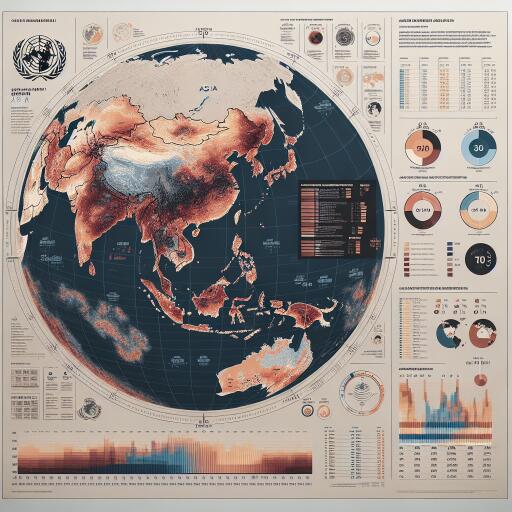
Asia is most climate disaster-impacted region, UN meteorological agency says
The latest findings from the World Meteorological Organization (WMO) reveal a concerning trend for the Asian continent, as it emerges as the most affected region worldwide by climate-related disasters. In a comprehensive assessment released this week, the organization documents a staggering number of 79 hydro-meteorological disasters throughout Asia in 2023 alone. These incidents, predominantly floods and storms, account for over 80% of the total events and have resulted in more than 2,000 deaths, underlining the high human cost of these climatic phenomena.
Celeste Saulo, the Secretary-General of the WMO, underscored the severity of the situation, noting that numerous countries across Asia have faced unprecedented extreme weather conditions this year. “Many countries in the region experienced their hottest year on record in 2023, along with a barrage of extreme conditions, from droughts and heatwaves to floods and storms,” Saulo remarked. She further emphasized the role of climate change in amplifying the frequency and intensity of such catastrophic events.
Significant warming trends across Asia are occurring at a pace surpassing the global average, the WMO report indicates. It highlights extreme temperature elevations stretching from western Siberia across central Asia and extending from eastern China through to Japan. This increase in average temperatures contributes to a host of adverse climatic impacts felt across the continent.
The repercussions of soaring temperatures are vividly evident in the dire state of Asia’s glaciers, particularly those situated in the high-mountain regions. According to the report, these ice masses have undergone substantial reductions in volume, a phenomenon directly attributed to the unprecedented highs in temperature and prolonged dry spells experienced last year. The loss of glacier mass not only signifies a distressing indicator of climatic shifts but also poses significant long-term implications for water availability and ecosystem well-being in the region.
As the data from WMO illustrates, the Asian continent is confronting an escalating climate crisis that demands immediate global attention and action. The increasing regularity and severity of hydro-meteorological disasters, coupled with the profound environmental changes witnessed, highlight the urgent need for enhanced resilience and adaptation strategies. Addressing these challenges will be crucial in mitigating the impacts of climate change and ensuring the safety and sustainability of communities across Asia.





Leave a Reply